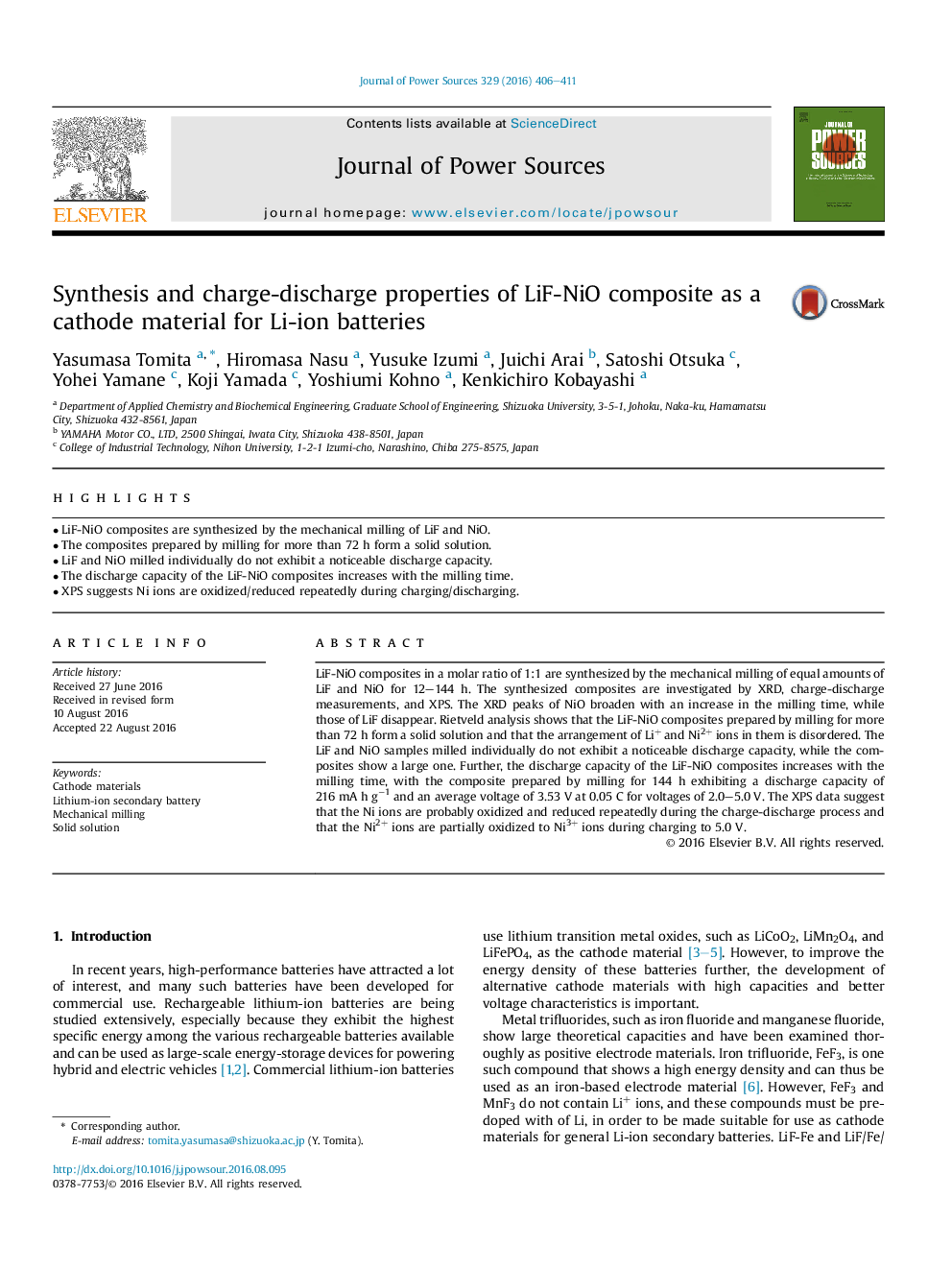| کد مقاله | کد نشریه | سال انتشار | مقاله انگلیسی | نسخه تمام متن |
|---|---|---|---|---|
| 1283411 | 1497903 | 2016 | 6 صفحه PDF | دانلود رایگان |
• LiF-NiO composites are synthesized by the mechanical milling of LiF and NiO.
• The composites prepared by milling for more than 72 h form a solid solution.
• LiF and NiO milled individually do not exhibit a noticeable discharge capacity.
• The discharge capacity of the LiF-NiO composites increases with the milling time.
• XPS suggests Ni ions are oxidized/reduced repeatedly during charging/discharging.
LiF-NiO composites in a molar ratio of 1:1 are synthesized by the mechanical milling of equal amounts of LiF and NiO for 12–144 h. The synthesized composites are investigated by XRD, charge-discharge measurements, and XPS. The XRD peaks of NiO broaden with an increase in the milling time, while those of LiF disappear. Rietveld analysis shows that the LiF-NiO composites prepared by milling for more than 72 h form a solid solution and that the arrangement of Li+ and Ni2+ ions in them is disordered. The LiF and NiO samples milled individually do not exhibit a noticeable discharge capacity, while the composites show a large one. Further, the discharge capacity of the LiF-NiO composites increases with the milling time, with the composite prepared by milling for 144 h exhibiting a discharge capacity of 216 mA h g−1 and an average voltage of 3.53 V at 0.05 C for voltages of 2.0–5.0 V. The XPS data suggest that the Ni ions are probably oxidized and reduced repeatedly during the charge-discharge process and that the Ni2+ ions are partially oxidized to Ni3+ ions during charging to 5.0 V.
Journal: Journal of Power Sources - Volume 329, 15 October 2016, Pages 406–411
